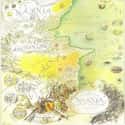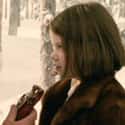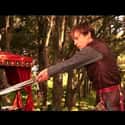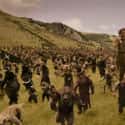-
(#13) Impossibly Powerful Gods Are Just Casually Running Around
As with many mythological pantheons, the Narnian gods are part of everyday life. You might run into Aslan or Tash, both of whom are fearsome regardless of your religious alliance. And they aren't the only ones. Roman gods show up too, such as Bacchus. Narnia, then, is a place where you can casually bump into a god (or god-like figure) just going about your business, and the results might not be as good as you'd hope.
After all, Aslan isn't a tame lion, and Bacchus is well known for having followers driven to madness and violence. With sentient beasts, witches, and numerous other threats to deal with, having gods walking around is just another nightmare to contend with in Narnia.
-
(#12) Narnia Is An Ancient Civilization With Zero Technological Growth
As we know, Narnia has existed for ages. More than one kingdom rises and falls within the books alone, and over a thousand years pass between the Pevensie reign and Prince Caspian's time. And yet, there's no technological growth throughout Narnia, as it remains a feudal world of magic and mystery throughout the entire series.
While that might paint it as a whimsical fantasy realm, it also raises some troubling questions. If Narnia mirrors our world in any way, it's likely susceptible to the nastier parts of medieval life, too. High infant mortality, plague, starvation, and oppression of lower classes likely run rampant. It's possible that Narnia replaces things like medicine with magic, but that's not something everybody has access to. Though Lewis may be looking back at medieval times through fantasy rose-colored glasses, the lack of advancement in 2000 years leaves a lot of lingering questions about quality of life in Narnia.
-
(#6) The Almost Inherently Bad Guys Are Racially Coded As "Not White"
While Narnia, thankfully, doesn't entirely code white as good and black as bad – The White Witch is a nice thumb in the eye of that trope – that doesn't mean the series is free of troubling associations with race. Specifically, the Calormenes.
Described as having dark skin, occupying a desert, and wearing turbans, the Calormenes are a pretty clear analog to Middle Eastern people, who, in Lewis's time (and, frankly, in modern Western culture), were often vilified. In Narnia, the Calormenes are violent, barbaric slave traders and the biggest supporters of Tash (a demonic deity of a state-sponsored religion) in The Last Battle. The Horse and His Boy does feature two Calormene characters who are clearly good, moral heroes, but they're painted as the exception, not the rule. Just because you feature "some of the good ones," that doesn't make your book less racist.
-
(#5) Women Are Healers, Men Are Fighters
"Battles are ugly when women fight," Father Christmas tells Lucy in The Lion, The Witch, and the Wardrobe. Not "battles are ugly when children fight," which is true, nor, "battles are ugly," which is also true, but specifically that battles are ugly when women fight, which is bullsh*t. That's why Lucy is given a healing cordial and Susan is given a magic, help-summoning horn, but Peter is given a sword.
Though Susan and Lucy are given tools to defend themselves, both are specifically told the means NOT to use them. Women are meant to support the men in battle with their healing and magic horns, not fight for themselves, no matter how much is at stake. In a world with witches, talking animals, and magical beasts, women are still relegated as helpers, not warriors.
-
(#8) Teaching Little Kids To Kill Is Super Dope
Battles may be ugly when women fight, but when 13-year-old boys fight, battles are proving grounds. In The Lion, The Witch, and the Wardrobe, Peter must prove himself in front of Aslan by slaying the wolf that's threatening his sister. Nevermind that Peter is only a year older than Susan, nor that Aslan (the giant f*cking lion) is right there; instead, he has to test his new sword against a battle-hardened wolf.
Aslan may have known Peter would win, and that there were even harder battles in Peter's future, but there's still something deeply disturbing about a Jesus-inspired lion teaching a young boy how to kill so he can properly rule a country that isn't his own.
-
(#10) Some Folks Are Just Innately Evil
The Chronicles of Narnia do sometimes play with the idea of good and evil. Edmund and Eustace, who both start out as self-serving characters, eventually come around to being good. But there are also a whole host of people who just seem to be inherently evil.
When the White Witch gathers her followers for battle, she calls upon entire species, such as werewolves, ogres, and ghouls. Throw that in with the overall treatment of the Calormenes and you have a pretty bleak and clear thesis that some races and species are inherently evil, a nasty statement for a book so clearly rooted in religious allegory.
New Random Displays Display All By Ranking
About This Tool
Our data comes from Ranker, If you want to participate in the ranking of items displayed on this page, please click here.






